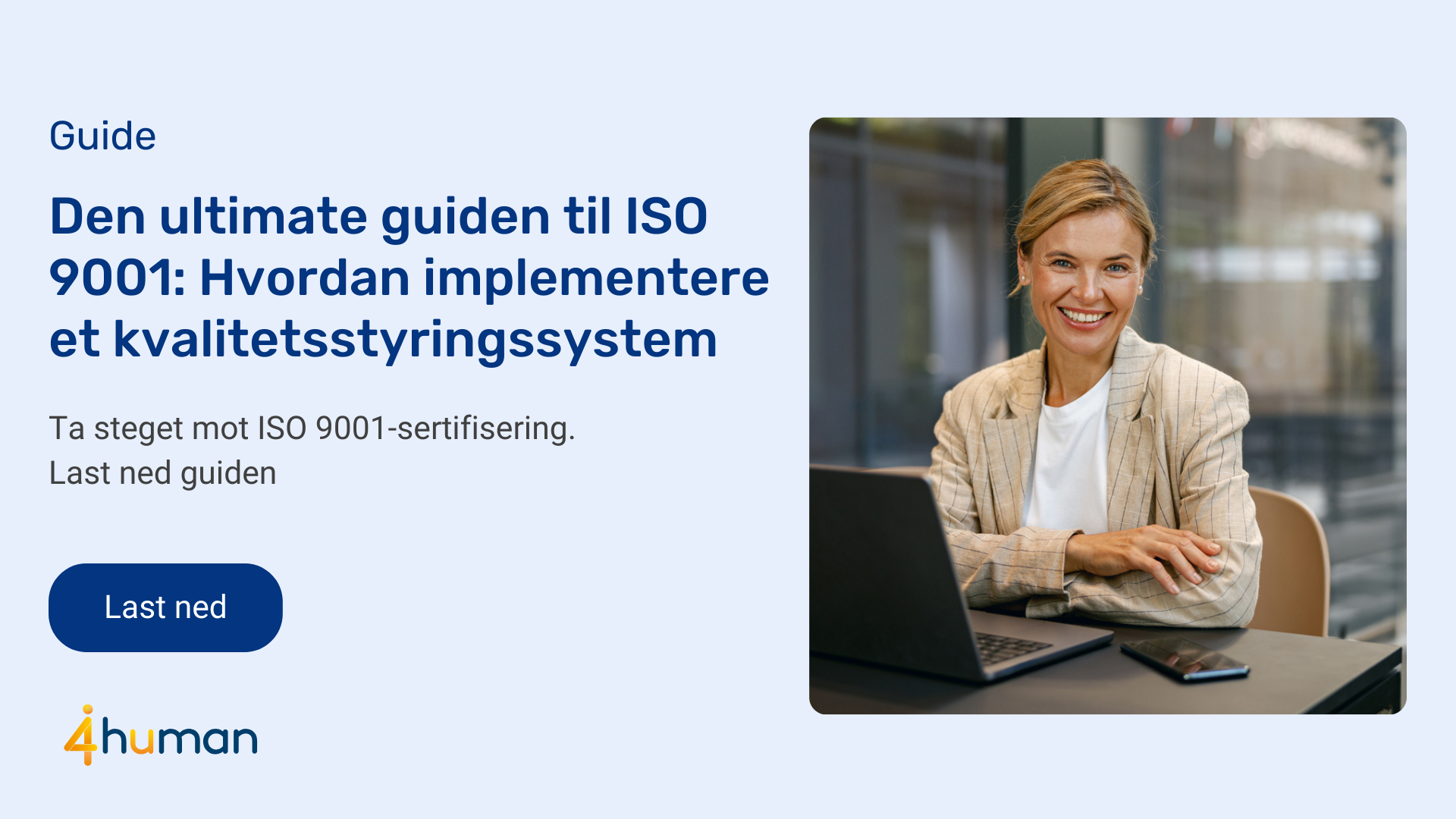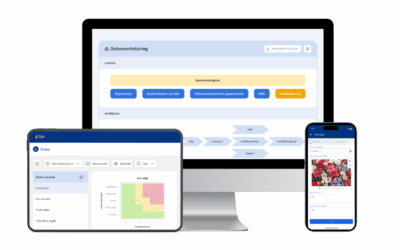3 key points for a successful implementation of ISO 9001

Å implement ISO 9001 can seem as a big taskbut it is a valuable investment that strengthens the quality of your processes and improves customer satisfaction. In order to help you to get i get started, we have we've gathered three critical steps that will guide you through a smoother and more efficient ISO 9001 journey.
1. Process mapping: Get full overview of your business processes your
ISO 9001 is about creating a clear structure in the company's processes. One of the first and most important tasks is process mapping. This involves identifying and visualizing how your various work processes work and how they are connected.
Instead of focusing on the hierarchy, the process map looks at the workflow - from raw materials to finished product, and how you meet customer needs. By mapping your processes, you can identify bottlenecks, inefficiencies and areas for improvement.
Process mapping ensures that all parts of the organization work together towards a common goal - high quality and customer satisfaction.
2. Risk management: Identify and reduce risks
ISO 9001 requires you to consider risks that could affect your performance. Risk management is about identifying potential challenges in your processes and finding ways to address them.
By implementing a systematic risk management process, you can reduce the likelihood of errors and ensure that quality is maintained at all levels. This involves both understanding risks that may arise internally within the company and externally from suppliers or market fluctuations.
Effective risk management leads to stability and continuous improvement in your business.
3. Establish deviation management: Ensure for continuous improvement
An important part of ISO 9001 is to establish a robust non-conformance management process. This is about identifying when something goes wrong, documenting it, and figuring out how to prevent it from happening again.
By establishing a system for handling deviations, you can ensure that any issues that arise are quickly captured and dealt with effectively. This not only helps you avoid the same mistakes in the future, but also allows you to continuously improve your processes.
With deviation management, you get a more responsive and improvement-oriented organization.
Ready to go to to take the next step?
This was only a small taste of how you can start å implement ISO 9001 i your company. For a complete guide to implementation - from process mapping to certification - can you can download download our ISO 9001 guide and start your journey towards higher quality and better customer satisfaction.
Download download the guide here 👇
Related posts
This is new in 4human QM365
4human QM365 has developed a completely new user interface, with a focus on increased usability, a uniform visual expression across the platform and...
Malthe Winje increased its competitiveness with QM365
Background: To strengthen its market position and facilitate further growth, Malthe Winje made a strategic choice: to certify within three...
This is new in 4human TQM
This is new in 4human TQM 2025 We are pleased to present a number of exciting news and improvements in 4human TQM ! This update offers...



